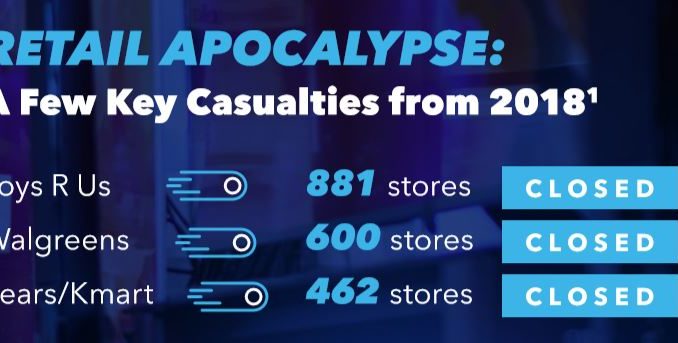
In 2018, three top retailers—Toys R Us, Walgreens, and Sears/Kmart—shuttered nearly 2000 brick-and-mortar locations. Each of these retailers failed to adequately adapt to customers’ rising expectations of a good digital experience (as established by online giants like Amazon and Netflix).
Increasingly, a good customer experience involves personalization across all channels, devices, and platforms. Even large, established retailers must deliver what consumers consider a good, personalized online experience if they expect to retain customer loyalty.
Source: Selligent
Gladly’s 2019 Customer Service Expectations survey found that 92% of respondents would stop purchasing from a brand after three or fewer bad experiences and nearly 30% would stop after just one experience.
Content produced in collaboration with Selligent.
Why is it important to humanize customer experience?
Accenture reports that over 75% of consumers are more likely to purchase from a retailer that knows their name and purchase history and can provide recommendations accordingly.
A similar study by Infosys revealed that over 70% of customers felt frustrated when a website’s content wasn’t personalized.
But before you can upgrade your customers’ experience, it’s important to understand what modern personalization means to today’s consumer. It’s so much more than just inserting a person’s name into an email subject line (once considered revolutionary).
These days, personalization must consider the following:
Data collection and processing
Personalized service/sales experienced (at the per-customer level)
Custom-tailored information, products, and services
Seamless messaging across all channels
“Getting personal with your customers starts with being human,” says Selligent. “Companies need to not only successfully implement the digital relationship but transform their customer relationships on a human level.”
A four-step approach to humanizing content
Humanizing your content to the extent that it connects with each individual customer requires several steps, all of which work together to deliver relevant content at the appropriate time in a customer’s buying journey.
These steps can be outlined as follows:
1. Begin with trust
If customers are expected to willingly share their data, they must trust your brand. This is a key requirement for any ongoing, trade-based relationship, so make sure you get this right.
2. Get permission
Be sensitive about what data you collect and always ensure you collect data with permission. Full disclosure of how and when you collect data may turn some people away, but it will also help humanize your brand and may inspire more customers to offer their data. Use the customer journey to help identify the appropriate time and place to collect data.
3. Give control to the customer
Make your data collection process as transparent and easy to access as possible.
“Providing an empathetic space for customers to explore what data is held and how it is used is also an ideal opportunity for the brand to explain how the customer benefits from sharing their data,” says Selligent.
4. Humanize your communications
Make your messaging as human as possible, even when using technology. This involves ensuring your automated content is relatable and personal. Retailers can do this by using humor, playful graphics, informal language, and enthusiasm. Above all, it’s important that messaging is customized based on the user and where they are in the customer journey. One-size-fits-all messaging is a sure way to disappoint your customers.
Supercharge personalization with AI
Artificial Intelligence (AI) can help businesses hyper-personalize messaging to their customers by combining data from multiple touchpoints. This involves knowing a customer’s social media likes, previous purchases, and behaviors and incorporating them into current situational needs.
Customers expect retailers to be able to do this in order to present hyper-personalized offers that are relevant to them. 54% of shoppers expect to receive a personalized offer or discount within 24 hours of identifying themselves and 32% expect one within the first hour. Additionally, 44% of shoppers indicated they would become repeat buyers after a personalized experience.
Source: Selligent
Per Selligent, “AI can be a critical driver of better conversions and marketing ROI, allowing marketers to identify their audience and tailor experiences, content, and delivery.”
These days, AI in marketing is becoming more of the rule than the exception as new businesses begin adopting this technology into their marketing strategy. A December 2018 survey by Salesforce revealed that adoption of AI by marketers grew 44% from 2017 to 2018 and is expected to increase by over 250% over the next two years.
A robust AI-engine like Selligent leverages several key capabilities to help marketers personalize their messaging. These include robust segmentation capabilities, tailoring messages to specific points in a customer’s buying journey, and making recommendations to shoppers based on past behaviors.
To learn more about the power of AI-driven personalization and the specifics about how Selligent’s AI-driven marketing engine works, check out their whitepaper, “The Case for Personalization.”
The post Humanize customer experience, supercharge it with AI appeared first on ClickZ.
Source: ClickZ
Link: Humanize customer experience, supercharge it with AI



Leave a Reply